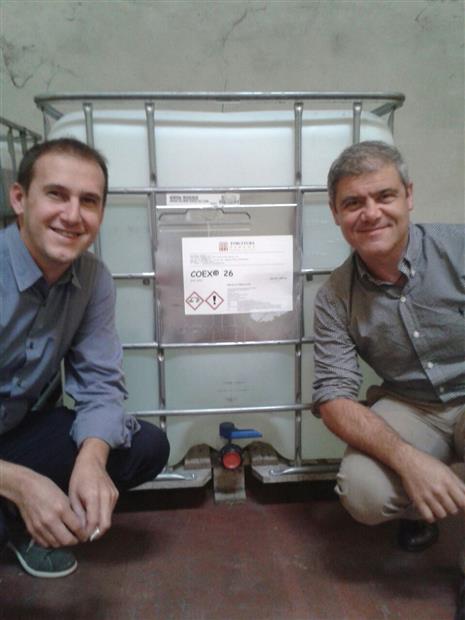Behind COEX lies the know-how and passion of two companies, Zanolo and Torcitura Padana, that has produced quality yarns for more than 50 years. Alberto Tonani, Head of Research and Development of the Zanolo Group, and Simona Pesaro, president of Torcitura Padana, tell us how the idea came about to invest in a 100% natural fireproof technology and how it was developed, from the initial hunch, to the patent that allowed COEX to officially debut on the market.
How did the idea of 100% natural fireproof technology come about?
Simona Pesaro: For many years both companies had been working on processes that could improve the performance of yarn and the idea of focusing on the fireproof/natural combination came about spontaneously in response to the constant requests that we were receiving from the market. In fact, before COEX, there were no natural fireproof fabrics, only synthetic fireproof fabrics or natural fabrics treated with chemical additives, which - besides containing potentially harmful substances, such as formaldehyde - partly compromised the aesthetic qualities, the softness, the comfort... our customers instead asked us for a fireproof product, but with the characteristics of natural yarns.


Besides these “aesthetic” concerns, companies gradually begun to consider environmental sustainability: from this point of view, having a completely biodegradable fabric is certainly a big bonus. Because of its properties, COEX is the only fireproof product in the world today to have obtained the GOTS certification (Global Organic Textile Standard), recognised as the most important international standard for textiles made with organically-farmed natural fibresBesides these “aesthetic” concerns, companies gradually begun to consider environmental sustainability: from this point of view, having a completely biodegradable fabric is certainly a big bonus. Because of its properties, COEX is the only fireproof product in the world today to have obtained the GOTS certification (Global Organic Textile Standard), recognised as the most important international standard for textiles made with organically-farmed natural fibres.
When did you realise that this type of technology could be worked on?
Alberto Tonani: The results of our research and experiments were positive straight away, confirming that we were correct to go with our initial intuition, i.e. acting directly on the molecular structure of the cellulose fibre, modifying it from the inside in order to create an "intrinsic" barrier against the flame, without adding additives. However, we had the problem of stabilising the fireproofing effectiveness of the COEX treatment, so in that respect, the collaboration with the Department of Organic Chemistry of the University of Pavia was fundamental. The researchers helped us identify and remove the elements that “disturbed” the reaction, allowing us to make it stable and repeatable over time.
Also, along the way we realised that working on the threads was not economically sustainable, so we started to think in terms of fabric: COEX technology is applied directly to the finished product, making it much more flexible.
What tests did you do to measure the effectiveness of COEX?
Alberto Tonani: It would be difficult to list them all. Each country actually provides different types of tests distinguished by sector and by product: for example, in the furnishing sector there are different tests for seats, curtains, bedding, etc. COEX has been tested according to the highest international fire protection standards for each product sector: from home furnishing to naval furnishing, from sportswear to workwear, and much more.
As In addition to the different certifications, the most significant data on the flameproof effectiveness of our technology comes from the LOI index (Limiting Oxygen Index), which measures the intrinsic capacity of the fibre to resist fire: the higher the index - that is, the amount of oxygen needed to burn the fibre - the lower its flammability. So, with a LOI index of 50, COEX is second only to mineral fibres, which have an extremely high flameproof power, but a completely different field of application.
What were the next steps?
Simona Pesaro: Once the fireproof performance had been developed, we took care of some accessory aspects, which were just as important such as the dyeing, the resistance of the fabric, the washing, etc. and today we are always striving to improve the performance of COEX as much as we can. We also soon realized that creating such an innovative technology was just a starting point: to really change the market we had to let the world know the scope of our invention. Today we are engaged in the communication and accreditation activities of COEX, a path that is no less demanding but which gives us just as much satisfaction.
Which day would you choose for COEX's date of birth?
Simona Pesaro: For us it is 5 August 2013, the date the industrial patent was registered. Next August it will be our fifth birthday, so we are still young and full of enthusiasm!

